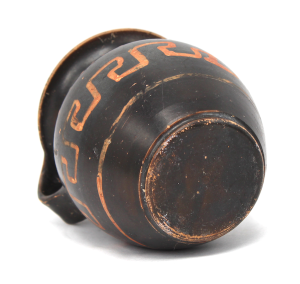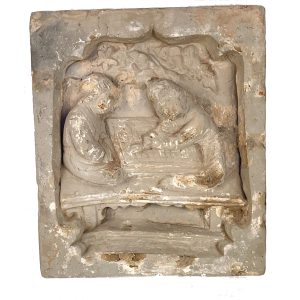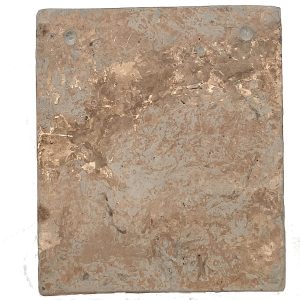Ancient, Xenon Ceramic Vessel, Magna Graecia, Italy (1368LME) $495
$495.00H: 3.125” W: 3” D: 2.875” | FREE SHIPPING IN CONTINENTAL U.S.!
Dating from the 4th century B.C.E., this miniature pottery vessel was wheel-thrown in the Greek colonies, Apulia, Magna Graecia in Southeastern Italy. Called Xenon ware, it’s elegant shape has a curved body, small neck with flared rim and handle and is decorated with painted orange geometric designs. Its diminutive shape indicates it may have been made for use by children or as a votive vessel. Common for pottery of this age there is some fading of the painted decoration and small chips. With no discernible repairs or restorations it is in very good shape for its age and use.






